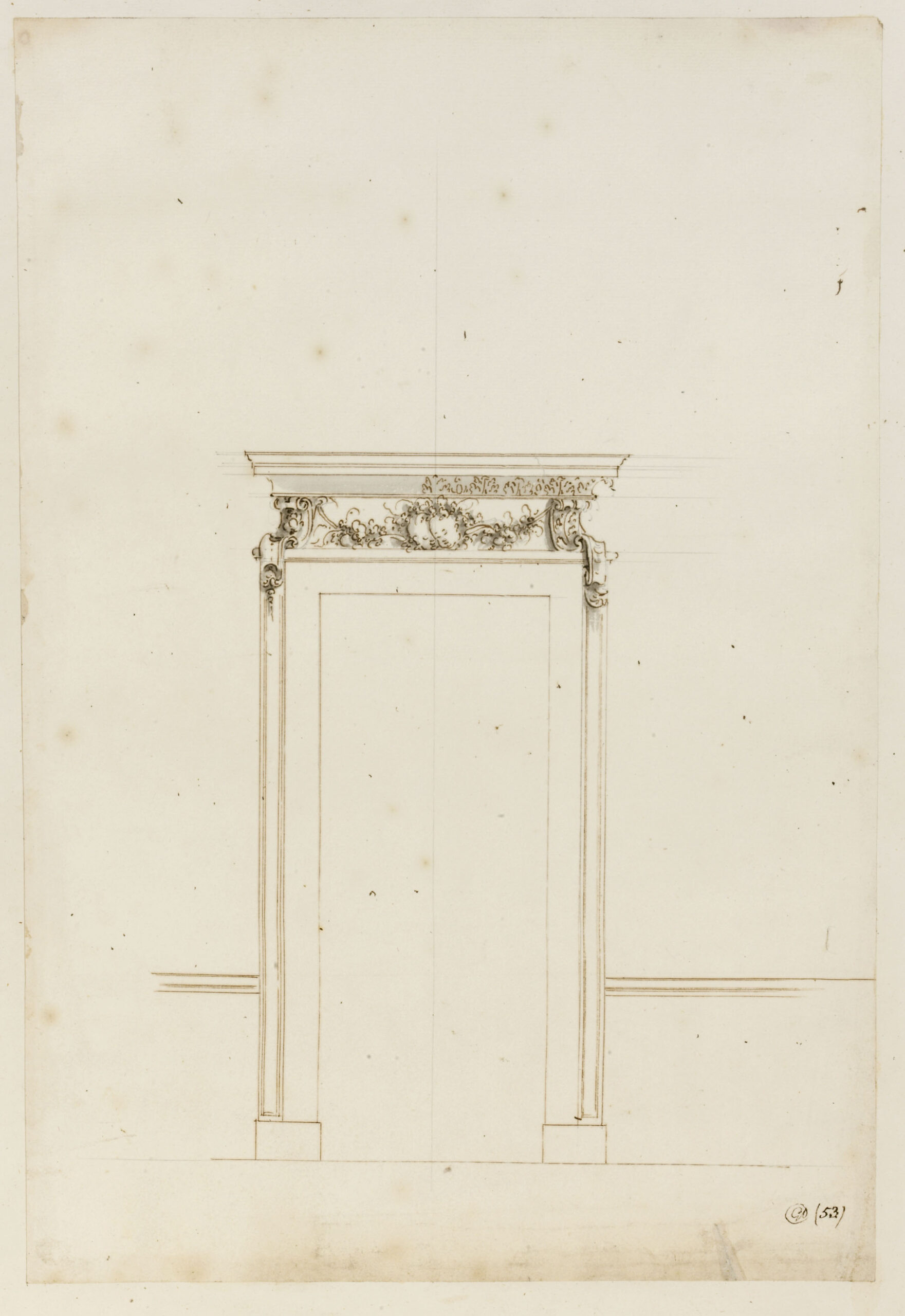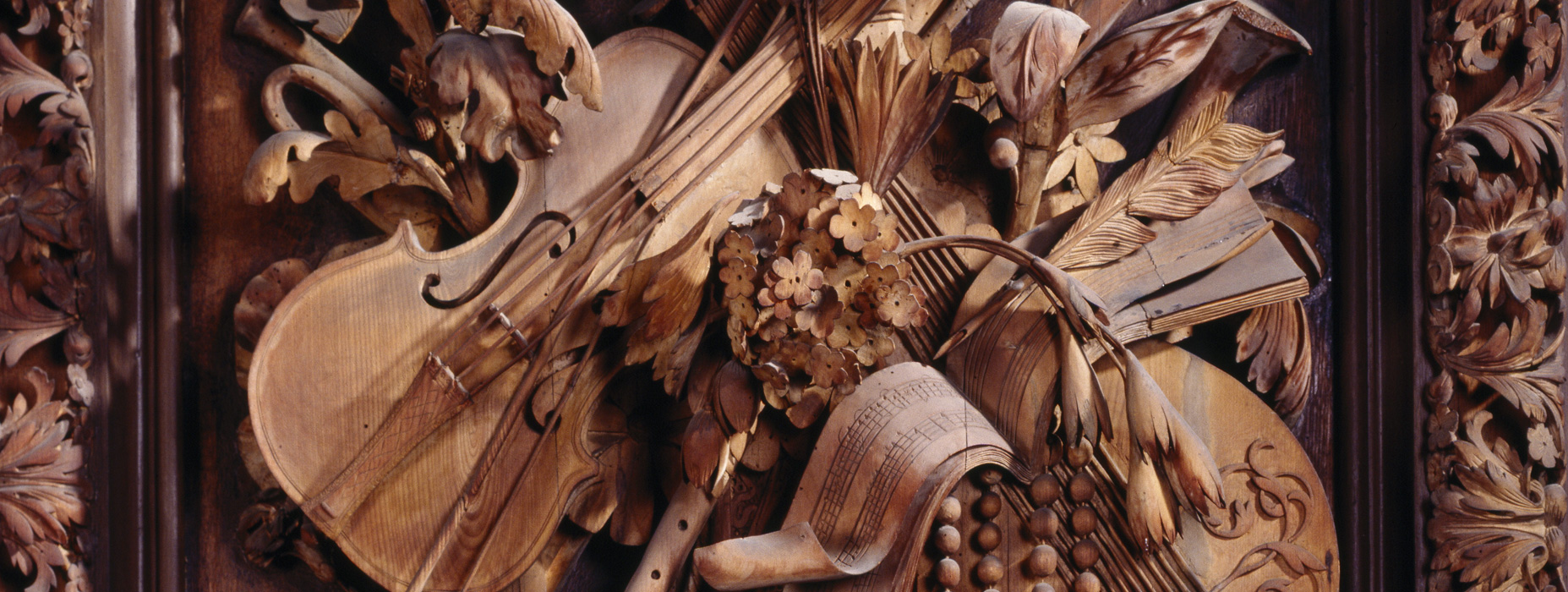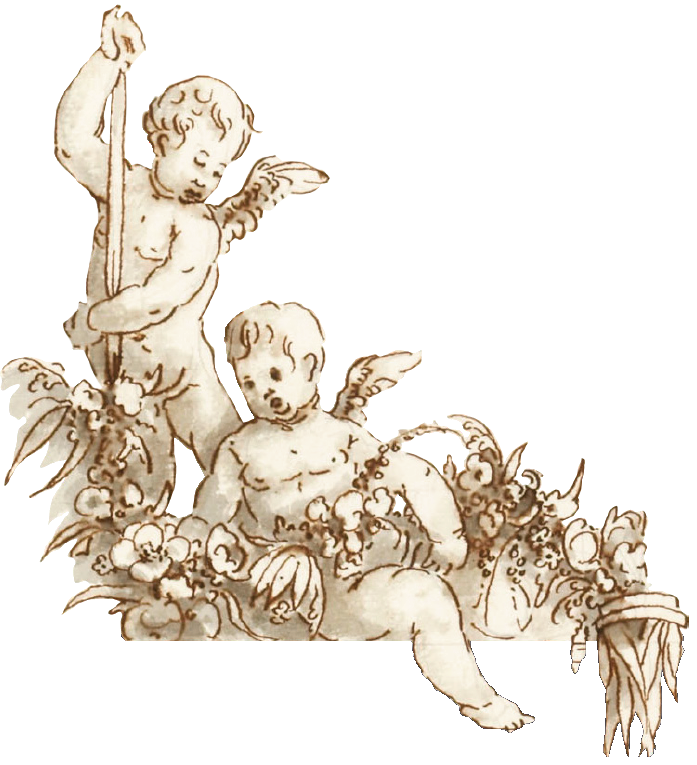Design for Doorway with Foliated Cornice
Creator(s): Grinling Gibbons 1648-1721
Date:
Accession Number: SM 110/54
Dimensions: 419mm x 283mm
Materials: Pen and brown ink over graphite under-drawing with warm grey wash; on laid paper.
Location: Sir John Soane's Museum
Credit Line (copyright notice for material) : © Sir John Soane's Museum
Online Catalogue Entry : http://collections.soane.org/OBJECT305

Design for Doorway with Foliated Cornice © Sir John Soane's Museum
NOTES ON THE ARTWORK
Design for a doorway with foliated cornice. Although not bearing a scale, the scale of the drawing can be deduced by comparisons with the other three drawings in this group, all of which are identical in technique (110/55, 56, 57 [Design for Doorcase, Possibly for the King’s Bedchamber, Design for Doorcase with Foliated Pilaster Frame, and Design for King’s Bedchamber Doorcase with Pediment on this website]). Two of these three have dado rails drawn to the same pattern as here, and set at an identical height on the elevations (110/55, 57). This height scales at 2 feet 6 inches on 110/55. Accordingly, this drawing is to the same scale as 110/55 (1 foot to just under 1 inch), and its door opening is 3 feet wide. The openings of 110/55 and 57 are 4 feet wide. As 110/57 is for the inside of the King’s Bedchamber, this design is probably for another door in the sequence of state apartments, and the obvious location would be the more private ‘King’s Writing Closet’, which lies beyond the King’s Little Bedchamber in the enfilade. The width of the door openings on the inside of this room, towards the King’s Little Bedchamber on the west and Queen Mary’s closet on the east, is just under 3 feet. The 2 feet 6 inches dimension on three of the drawings, including one for the King’s Bedchamber, is exactly that of the dado in the Bedchamber and Little Bedchamber in the fabric, completed in 1699-1700 (see Wren’s estimate of April 1699, Wren Society, IV, pp. 58-59). This dimension compares with a higher dado rail in the adjoining state rooms (3 feet 10 inches), and also with a higher rail in Gibbons‘s wall elevations of Queen Mary’s Closet (e.g. 110/66 [Design for the Interior of Queen Mary’s Closet with Putti], where it scales at 3 feet 6 inches). The design provides for a projecting doorcase around the door opening. This is apparent from the way the consoles at the ends of the frieze appear to lie flat on the top of the door frame, before turning over the corner and attaching themselves to the pilaster strips at the sides of the architrave. A shelf-like projection is also implied by the large bull-nose moulding across the top of the door, which implies a heavy horizontal element.
Literature: Wren Society, IV, pl. 41, top left.
Digitisation of the Drawings Collection has been made possible through the generosity of the Leon Levy Foundation.
If you have any further information about this object, please contact: [email protected]
×


